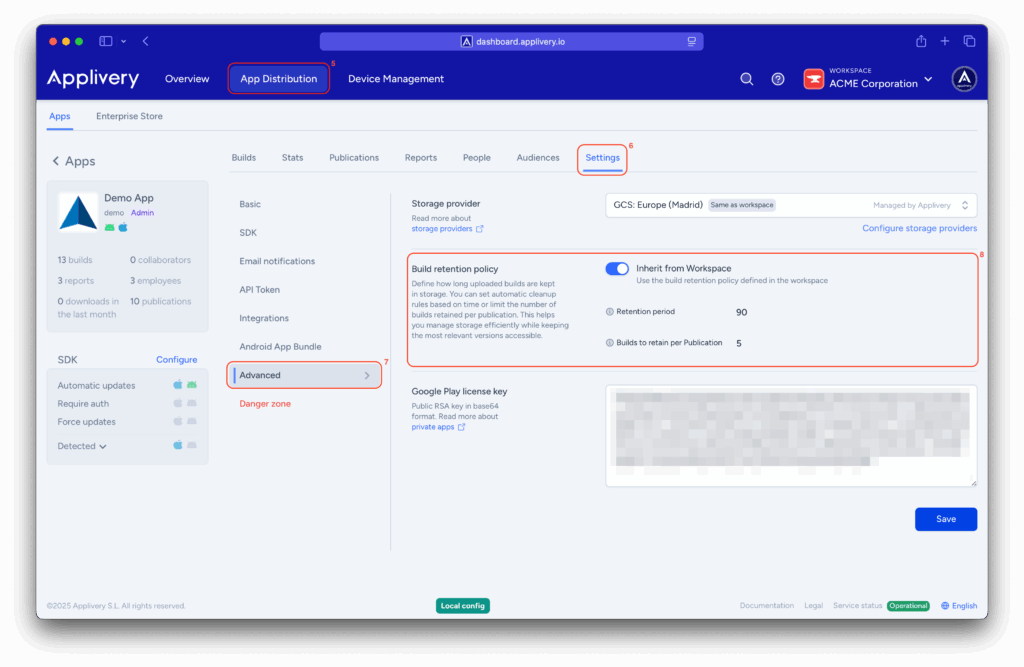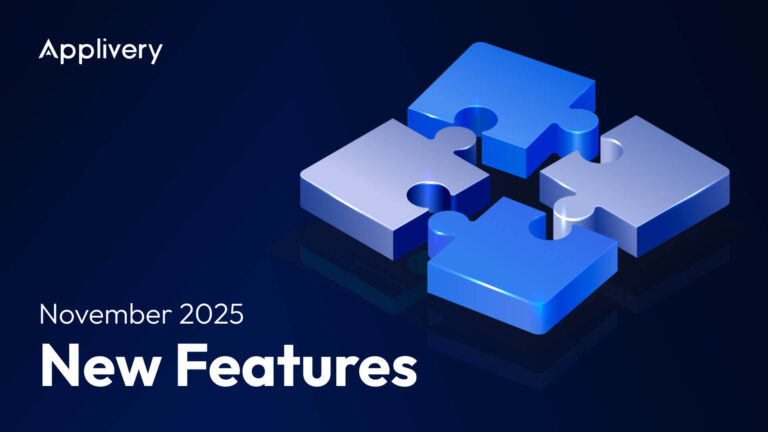This November, Applivery introduces two key updates focused on increasing governance, cost predictability, and operational agility for our B2B customers.
The platform prides itself on its API-first architecture and modular approach, both designed to help organizations build a resilient DevOps strategy. To uphold this commitment to efficiency and predictability, we are announcing two key functionalities that enable full Build Lifecycle Control and User Control.
Major announcement: Build Retention Management
This new feature addresses the critical pain point of uncontrolled storage and unpredictable costs caused by indefinite build retention. By automating the cleanup and archiving process, Applivery transforms storage management from a reactive burden into a predictable, strategic asset.
- For IT/Management: the introduction of clear retention policies ensures cost predictability and enhances compliance. By enforcing automatic data lifecycle control, IT teams eliminate the risk of storing obsolete builds indefinitely, which is crucial for maintaining security and meeting industry regulations. This provides a defined governance structure over software artifacts.
- For Development/DevOps: this change strengthens workflow resilience by maintaining a clean and optimized workspace. It removes the manual burden of artifact cleanup, allowing teams to focus on core feature delivery and accelerating the CI/CD pipeline. The platform becomes a more reliable and efficient source of truth for current builds.

Effective January 15, 2026, all Applivery workspaces will automatically transition away from infinite storage, adopting new retention policies based on the specific subscription plan. This ensures a standard of efficiency and predictability across the platform.
For Enterprise customers requiring long-term archiving for audit or specific compliance mandates, unlimited retention remains available but must be explicitly requested and enabled.
Read more about Build Retention Management in our documentation here or request a consultation with our team to review your subscription plan.
Immediate Control: Expiring Publications
This feature, available immediately in November, complements retention control by allowing teams to manage the frontend availability of specific releases.
What it does: it allows teams to define the exact date and time when a specific publication should automatically stop being available for download from the private App Store.
How it works: simply enable the Auto-expire option within the publication settings and set the desired timestamp. Once the expiration time is reached, the publication will no longer be accessible.
This eliminates the friction and human error associated with manually deactivating test versions, freeing up time for more strategic development tasks.

New in Governance: User Activity Trace
We are introducing User Activity Trace, a new feature that provides clear visibility into user activity across the platform. This is a crucial tool for IT and compliance teams seeking enhanced workspace governance.
What’s included: activity trace now records the last login and last action for each user.
Full coverage: activity is tracked across the Dashboard, SDK, and Enterprise Store, giving you a complete overview of how your team interacts with Applivery.
This improvement helps you monitor engagement, enhance security, and maintain better control over user permissions and access within your workspace.
Control is the new engine of agility. By integrating Build Retention Management, Expiring Publications, and User Activity Trace, Applivery solidifies its position as the platform that ensures your strategy is efficient, secure, and, crucially, predictable in the long term.





